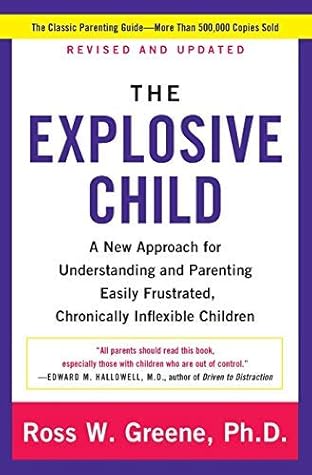More on this book
Community
Kindle Notes & Highlights
Read between
March 23, 2022 - February 10, 2024
Even if that problem has never come up before, it’s predictable now (because it’s already happened once). Difficulty regulating emotions
the skill of putting one’s emotions on the shelf so as to think through solutions to problems more objectively, rationally, and logically—a skill called separation of affect—is really important.
respond to problems or frustrations with more thought than emotion,
black-and-white thinkers living in a gray world
difficulty approaching the world in a flexible, adaptable way and become extremely frustrated when events don’t proceed in the manner they had originally conceived.
strong preference for predictability and routines, and struggle when events are unpredictable...
This highlight has been truncated due to consecutive passage length restrictions.
experience enormous frustration as they struggle to apply concrete rules to a world where few such rules apply:
COURTNEY: I don’t know.
kids are rarely able to describe their difficulties with this kind of clarity.
INFLEXIBILITY + INFLEXIBILITY = MELTDOWN
some of the inaccurate things that have been said about your child
She Just Wants Attention
simply ignoring the behavior will cause us to miss the boat on what’s really getting in the way.
Manipulating Us
Not Motivated
Kids do well if they can
Making Bad Choices
Has a Bad Attitude
kid lacked crucial thinking skills.
Knows Just What Buttons to Push
Has a Mental Illness
for it points us in the direction of what really needs to be done to help kids with concerning behaviors: solve the problems that are causing those behaviors.
Identifying your child’s lagging skills can help you understand her difficulties more accurately, take her concerning behaviors less personally, and respond in ways that are more compassionate, less punitive, and more effective.
lagging skills should also change your vocabulary.
Attention-seeking, manipulative, ...
This highlight has been truncated due to consecutive passage length restrictions.
characterizations of your child were never accurate and simply perpetuate the use of interventions that may not have be...
This highlight has been truncated due to consecutive passage length restrictions.
behavior was not the most important part of the picture.
instead of putting their energy into rewarding and punishing behavior, adults should instead focus on solving the problems giving rise to those behaviors.
“That doctor says that by the time she’s going nuts it’s already too late.”
most kids with concerning behaviors are reliably set off by the same five or six (or ten or twelve) problems every day
You want to be in crisis prevention mode, not crisis management mode.
wording of the unsolved problem on the ALSUP is going to translate directly into the words you use when you introduce the unsolved problem to your child
GUIDELINE #1:
start your unsolved problems with the word difficulty and get rid of the concerning behavior altogether: “Difficulty sharing toys with brother in the playroom.”
what almost always comes after the word difficulty is a verb.
GUIDELINE #2:
wording of the unsolved problem should contain no adult theories.
the minute you’re inclined to write the word because in the unsolved problem, stop writing. Everything that comes after because is a theory.
there’s a decent chance that what you thought was making it difficult for your child to meet a particular expectation is not what is actually making it difficult for your child to meet that expectation.
it’s your job to know how to find out.
Your child is your best source on what’s making it difficult for them to meet a given expectation.
GUIDELINE #3:
Make sure the unsolved problems are “split” rather than “clumped.”
having difficulty writing the paragraphs on the Language Arts homework
memorizing their multiplication tables, then that’s a separate unsolved problem, too.
this guideline going to make your list of unsolved problems very long? Yes,
coming to an awareness of the sheer number of expectations your child is having difficulty meeting can be a bit jarring.
you’re not going to be solving all of them at once.


